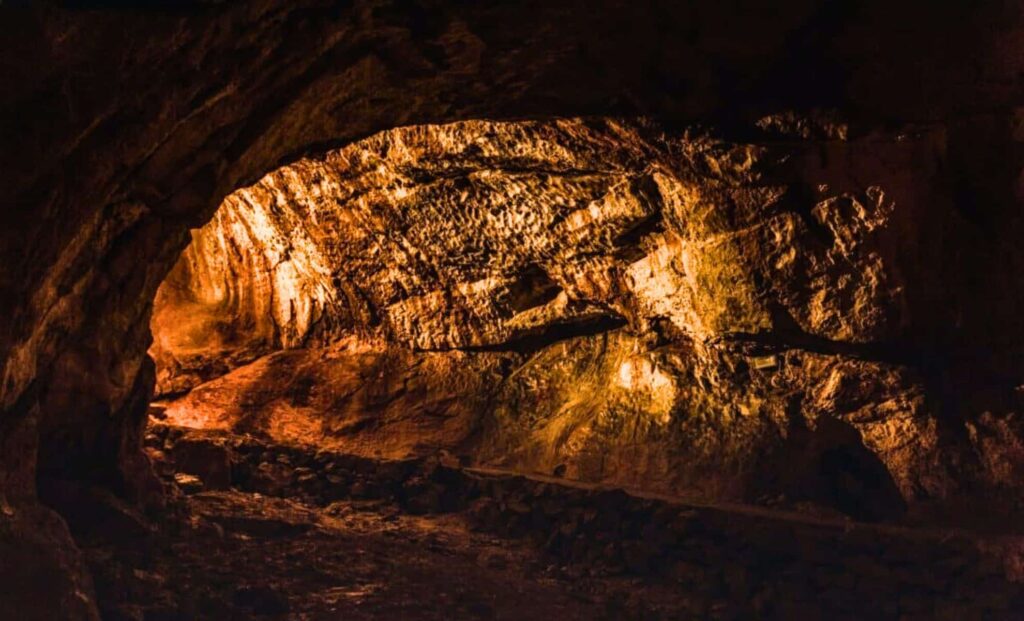In a limestone cave overlooking the Loire River in central France, archaeologists have uncovered markings that may fundamentally rewrite our understanding of Neanderthal cognition. Sealed under 30 feet (9.14 m) of sediment for over 57,000 years, the cave walls at La Roche-Cotard bear deliberate finger tracings—engraved lines and arcs pressed into soft chalk by ancient hands.
A peer-reviewed study published in PLOS ONE presents compelling evidence that these markings were created not by modern humans but by Neanderthals. The cave’s entrance was sealed by natural forces long before Homo sapiens arrived in this region of Europe, making Neanderthals the most likely—and possibly the only—authors of the engravings.

This finding directly challenges the long-standing view that symbolic behavior, including visual abstraction, is a defining hallmark of modern humans. While Neanderthals have long been recognized as adept toolmakers and hunters, their mental world has often been portrayed as practical, not expressive. The evidence emerging from La Roche-Cotard disputes that narrative.
A Sealed Cave, a Controlled Context
What sets La Roche-Cotard apart from most Paleolithic sites is its pristine preservation. After a period of intense flooding and sedimentation during the Middle Paleolithic, the cave was naturally sealed off from the outside world—creating a unique archaeological context, uncontaminated by later human or animal activity.
In the study, lead author Jean-Claude Marquet and his team analyzed the wall markings using 3D photogrammetry and taphonomic assessments. The lines were not random scratches or claw marks. They were created by human fingers deliberately drawn across the cave’s soft, chalky surface—a local limestone known as tuffeau. Controlled replication experiments confirmed this.


To date the site, researchers used optically stimulated luminescence (OSL), a method that estimates when mineral grains were last exposed to light. Samples from the cave’s entrance indicated it was sealed between 57,000 and 75,000 years ago. This timeframe significantly predates any known presence of Homo sapiens in that region.
Within the chamber, archaeologists also recovered Mousterian stone tools, an industry strongly associated with Neanderthals. The study found no evidence of post-Neanderthal human activity at the site.
“All the evidence together provides strong indirect, cumulative evidence that Neanderthals produced the finger markings,” said Dr. Paul Pettitt, an archaeologist at Durham University.
Structured Markings, but Not Pictorial Art
Unlike later Upper Paleolithic cave art—such as the animals of Chauvet, Altamira, or Lascaux—the La Roche-Cotard engravings are abstract. The markings, which include lines, arcs, dots, and intersecting grids, are structured but non-figurative. They were found across four panels in what researchers call the Pillar Chamber.


Some may question whether these qualify as “art” in the modern sense. But Marquet and colleagues argue that the engravings show consistent patterns, spatial organization, and intentional repetition. Their form implies purpose beyond functionality—a hallmark of symbolic behavior.
“The anthropogenic origin of the spatially structured, non-figurative marks found within the cave is confirmed using taphonomic, traceological and experimental evidence,” the authors concludes.
This discovery builds on earlier, controversial evidence for Neanderthal symbolism. For instance, pigment-based markings in Spanish caves—dated to 65,000 years ago—include red hand stencils and geometric shapes attributed to Neanderthals. Similarly, in Bruniquel Cave, France, researchers uncovered circular stone constructions dated to 176,000 years ago. These sites, though hotly debated, suggest Neanderthals may have expressed ideas or identities in material form long before Homo sapiens arrived in Europe.
AI and Digital Archaeology Offer New Tools
The investigation into Neanderthal cognition isn’t just relying on sediment and stone. A separate study led by April Nowell, published in Scientific Reports, applied machine learning to analyze finger flutings—markings made by dragging fingers across soft surfaces, similar to those found in La Roche-Cotard.
Nowell’s team created two datasets: one using a moonmilk-like surface to simulate real-world conditions, and another using virtual reality environments. Over 1,400 digital flutings were analyzed using convolutional neural networks to determine whether machine learning could identify the sex of the person who made them.


Results were mixed. The virtual dataset proved too shallow for meaningful classification, but the tactile dataset achieved up to 84% accuracy. While preliminary, this opens the door to reconstructing behavioral or demographic traits—such as sex, handedness, or even individual signatures—from ancient markings.
“Machine learning gives us the ability to identify patterns too subtle for the human eye,” Nowell noted in the Scientific Reports study, emphasizing the promise of this approach in future archaeological research.
Taken together, these findings push the scientific community toward a broader redefinition of what symbolic behavior looks like—and who was capable of it. The growing corpus of Neanderthal-associated marks, engravings, and constructions strongly suggests that abstract thinking and symbolic intent were not exclusive to modern humans.

